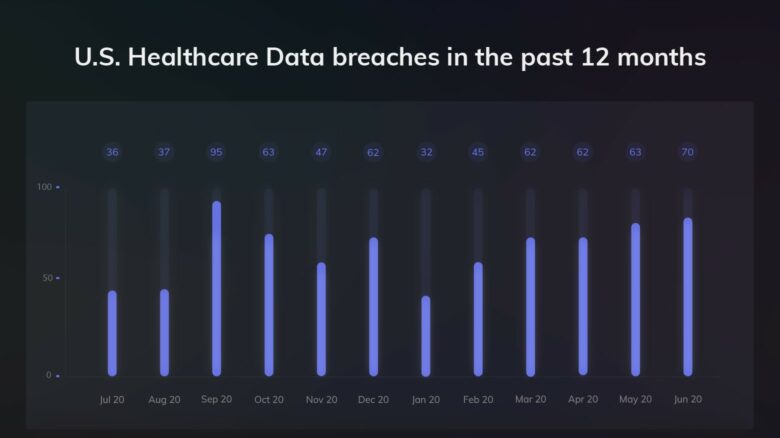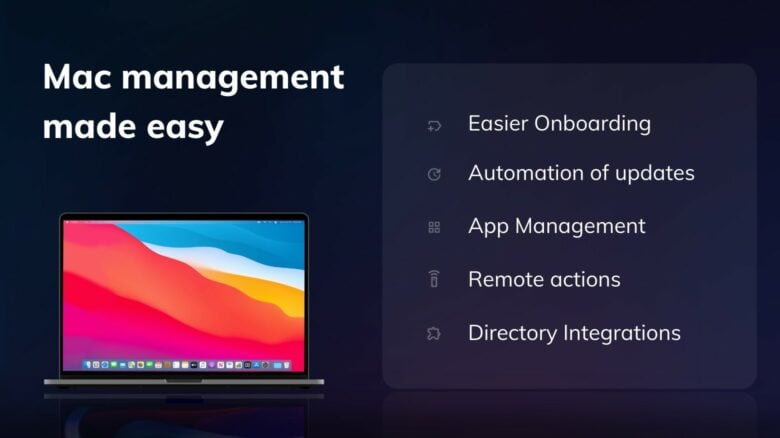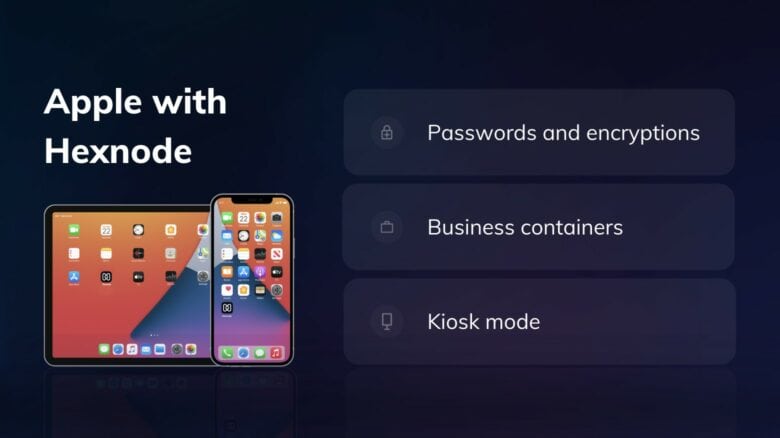This health care data security post is presented by Hexnode.
The health care sector is under tremendous stress due to the COVID-19 pandemic and the persistent threat of hackers, phishers and other bad actors. Staffers are overworked and under-resourced, while hackers employ ever-more-sophisticated methods to compromise sensitive health care data.
The solution is a unified endpoint management system such as Hexnode, one of the market leaders. The platform can be employed to enhance the security of any health care enterprise and safeguard critical patient data against breaches.
Hexnode perfectly aligns with the capabilities of Apple devices, streamlines various processes, and makes it easier for organizations and end users alike.
Digitization in health care: Pros and cons
While health care systems have traditionally relied on paper records, digital health records have largely superseded conventional physical records. But as healthcare rapidly goes digital, the transformation creates new openings for hackers.
Bad actors often exploit poorly secured endpoints and networks, compromising millions of health records. According to Cybercrime Magazine, the health care industry is expected to spend $125 billion on cybersecurity from 2020 to 2025.
Digital security and the relevance of proper security measures
Private health data gets sold for a fortune on the dark web, and the health care sector has not widely deployed resources to tackle the growing menace of cyberattacks.
It’s critical to secure health care data to safeguard clinical patient information from hackers and phishers. Protected health information, falling into the wrong hands, can have grave implications, such as Identity theft and medical fraud. And then there’s HIPAA.
HIPAA compliance and the need for privacy

Image: Hexnode
Organizations must also ensure that they comply with the rigid requirements of the Health Insurance Portability and Accountability Act of 1996, or HIPAA, for the privacy and security of protected health information. This federal law protects sensitive patient health information from being disclosed without his or her consent or knowledge.
Failure to comply with HIPAA regulations can result in hefty fines. And data breaches can trigger lawsuits.
June 2021 saw more than 500 reported health care data breaches. That’s an 11% increase in reported breaches over the previous month, and it happens to be the highest monthly total since September 2020 — and well above the average of 56 breaches per month over the past year.
Hackers use multivector cyberattacks to infiltrate their victims’ networks using multiple points of entry, which can include USB flash drives, email, web browsers, mobile apps, etc.
On top of that, the attack surface has grown tremendously with the adoption of the Internet of Medical Things, a connected infrastructure of medical devices, software applications and health services.
Enterprises often use things like virtual private networks, firewalls or antivirus software to protect against malicious actors attempting to gain unauthorized entry into the network. However, with the immense amount of sensitive data that health care entities maintain, and the increasingly sophisticated techniques adopted by hackers, advanced solutions are necessary to manage the devices efficiently.
Why migrate to advanced device management solutions?
Unified endpoint management, or UEM, is like mobile device management on steroids. It combines the capabilities of MDM with enterprise mobility management, or EMM.
UEM adds features like mobile application management (aka MAM), identity access management (IAM) and containerization to conventional MDM capabilities. UEM can manage numerous endpoints with multiple operating systems.
Apple with Hexnode: A perfect combo

Photo: Hexnode
Hexnode lets heath care enterprises manage iPhone, iPad, Mac and Apple TV devices from a single, comprehensive platform. Apple Business Manager, along with Hexnode MDM, enables management capabilities that are exclusive to Apple devices, thereby equipping the gear for efficient employment in the health care sector.
Hexnode provides exclusive features, including:
-
Easier onboarding
Devices can be onboarded swiftly, employing Hexnode’s integration with Apple Business Manager and allowing features like wireless supervision and automated device enrollments. So, health care devices are equipped to be work-ready from day one.
-
Automation of software updates
Hexnode can easily enforce software updates on the entire fleet of organizational devices without the hassles of manual intervention.
-
App management
Hexnode can configure a mandatory app policy for Apple devices to include critical medical apps. With features like blacklisting and whitelisting, the safety of devices can be enhanced. While blacklisting forbids the usage of blacklisted apps, the whitelisting feature blocks all apps except the whitelisted ones, thus securing the device from unwanted apps and misuse.
-
Remote actions
Doctors can check vital signs of patients like heart rate, oxygen intake levels, etc., recorded remotely using telemedicine software, without physically accessing the device.
-
Directory integrations
Health care institutions can migrate users from directories like Active Directory, Azure AD, G Suite, EAS and Okta directly to Hexnode. The onboarding of users, groups, organizational units or even entire domains directly from directories is possible. Entire hospital directories can be easily linked using the directory services.
Tackling the worst nightmare: Losing a medical device
Hexnode’s location-tracking feature can zero in on a lost device’s location. Furthermore, thanks to the location history feature, all locations where the device has been can be obtained.
Features like lock device, lost mode and remote ring can be employed for lost devices. If the device can’t be successfully tracked down, the wipe device action can be initiated. This deletes critical data and ensures that sensitive patient data doesn’t fall into the wrong hands.
How secure are Apple devices with Hexnode integration?

Image: Hexnode
Apple devices integrated with Hexnode offer comprehensive features to address security issues:
-
Passwords and encryption
Health care devices can be locked with a password to ensure only authorized access to the device and its apps. Configuring options like password complexity, auto-lock, and passcode age and history ensures the strength and periodical change of the passcode. Additional layers of security can be enabled by encryption, scrambling the data.
-
Business container and managed domains
The business container in iOS is a smart approach to enterprise data management. It ensures that the documents from managed sources are accessed only in managed destinations, thus differentiating corporate and personal content. Domains can be designated as managed with the managed domain, ensuring that they can be opened only by the managed apps.
-
Kiosk mode
With kiosk mode, devices can be locked to the bare essential medical apps and websites, thwarting the possibilities of access to unwanted and nonsecure applications.
An Apple device with Hexnode keeps the hackers away!
The ongoing pandemic, and the persistent threat of cyberattacks, put the entire health care sector under tremendous stress. Hexnode greatly enhances the security of health care workplaces and safeguards critical patient data from being stolen and sold on the dark web.
A unified endpoint management solution like Hexnode perfectly aligns with the already-impressive capabilities of Apple devices.
Want to see how it can boost productivity and security within your organization? Take advantage of a free 30-day trial of Hexnode UEM. You — and your customers — won’t be sorry.


